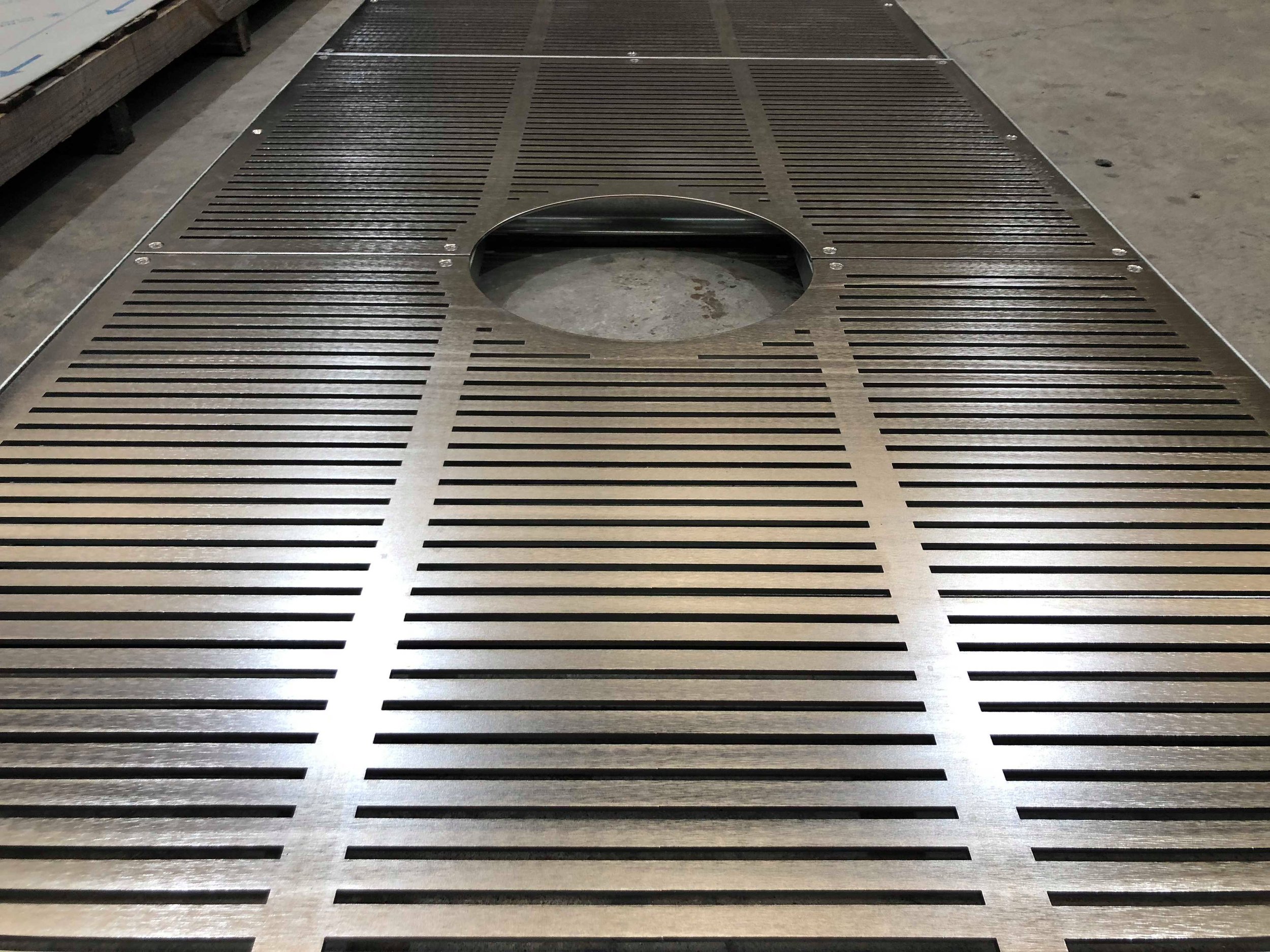Care & Maintenance of Stainless Steel
The following are some basic tips to help ensure your stainless steel products stay looking their best for years to come.
As with any material, Stainless Steel is susceptible to deterioration and tarnishing. Although a lot more resistant than other steel products it still requires maintenance to keep it at its peak.
Salt air, high temperatures, chlorine / salt water pool evaporations, acids and high levels of vehicle exhaust emissions can all have a detrimental effect on the surface of the stainless steel and limit its ability to continually form a protective layer over its surface.
For this reason, we can supply some safe to use protective and rejuvenating products and a comprehensive cleaning schedule that must be followed to ensure greater longevity.
DAILY BASIC DOMESTIC CLEAN:
- Simply wipe down the stainless steel surfaces with soapy water, detergent or surface spray cleaner as you would any other work surface in the kitchen or bathrooms.
MONTHLY DOMESTIC CLEAN:
- Wipe down the stainless steel surfaces with soapy water, detergent or surface spray cleaner.
- Remove all small discoloration spots as soon as they are noticeable with a cloth and cream-based cleanser. Follow the directions on the pack. (“Cyndan” Stainless steel rejuvenating paste is ideal for this use).
- When using a cleaner or cleaning solution for the first time, always test clean a small area first in an inconspicuous place to ensure it will give you the results you intend.
- If the stainless steel has a linnished or satin (grain) finish, remove discoloration spots with the cleaning paste mentioned above rubbing parallel with the surface grain pattern.
- When dry apply a single coat of “Cyndan” Century stainless steel protector.
- Following this process will greatly reduce any chance of tea staining and build up of contaminates.
BE SURE NOT TO:
- Use steel wool (wire wool) as it is made of carbon steel and will leave fragments behind that will rust on the surface of the stainless steel.
- Use scourers or cleaning cloths that have been used on ordinary steel (for the same reason).
- Use bleach, acids, chlorine or citrus based cleaning agents on or near stainless steel.
- Use scourers on mirror finish stainless steel products.
- Rub against the grain when cleaning linished or satin finish stainless steel.
- Skip the cleaning process listed above.
Daily and monthly cleaning is essential to keep your stainless steel products in good order and to minimize Tea Staining.
MAINTAINING RAILS IN SWIMMING POOLS:
Pool rails are essentially steel submerged in a slightly saline solution. This creates the potential for the steel to corrode, even if it is stainless steel, although the corrosion rate will be much slower with stainless steel.
A second cause of corrosion of steel in water is galvanic corrosion, caused by currents generated by buried electrical cables (for example, to power underwater lights, filters, aerators or vacuum cleaners). The current creates a flow of electrons that causes the steel to oxidise.
The practical solution to these problems is to install zinc (or aluminium) anodes attached to the stainless steel rails in the pool. Because of the chemical structure of different metals, zinc corrodes before steel, and therefore the zinc anodes gradually are sacrificed while effectively preserving the steel.
After a period of a few months to a few years (depending on local conditions), the zinc anodes will be almost fully corroded (ie, most of the zinc has gone into solution). This change would be noticed in a routine asset monitoring program and is a trigger to install a replacement anode. Zinc anodes are readily purchased from Concept Stainless Design, boating shops and ship suppliers (or over the internet). Be sure to buy an anode that has a hole or slot that matches the fitting on the rails.
Also, only buy anodes with more than 99 % pure zinc, or they may not work.
Anodes are normally attached by nuts on a threaded bolt. The fitting will be apparent when you examine the anodes supplied with the rails. Remember that the anode must always be submerged to work effectively - the electrical current runs along the steel and through the water. Salt water is more conductive (more corrosive) than freshwater.
To clean water spots off areas not submerged in water simply wipe down with a cloth and warm soapy water, rinse off, then wipe dry with clean dry microfibre.

Contact us.
Have a design you would like to get made?
Don’t hesitate to contact us for your free quote.
